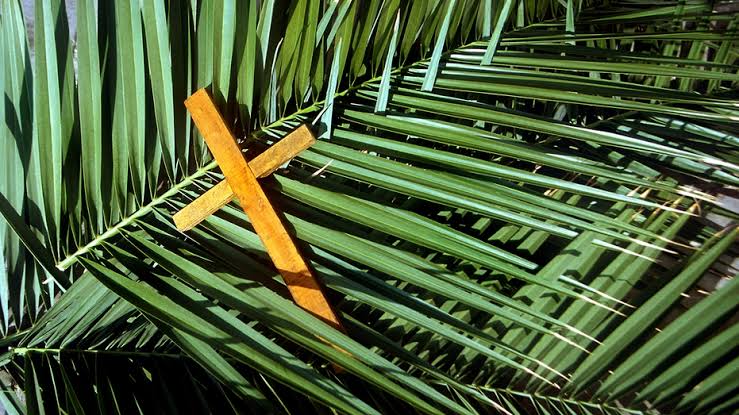Palm Sunday is one of the most important observances in the Christian liturgical calendar. It marks the beginning of Holy Week, the final and most sacred week of the Lenten season, culminating in Easter Sunday, which celebrates the resurrection of Jesus Christ. Falling on the Sunday before Easter, Palm Sunday commemorates the triumphant entry of Jesus into Jerusalem—a moment of both celebration and prophecy that foreshadows His suffering, death, and ultimate victory over sin and death.
*1. Biblical Foundation of Palm Sunday*
The narrative of Palm Sunday is recorded in all four canonical Gospels: *Matthew 21:1–11, Mark 11:1–11, Luke 19:28–44, and John 12:12–19.* According to the Scriptures, Jesus rode into Jerusalem on a donkey, and the crowds greeted Him by laying down palm branches and cloaks on the road, shouting *“Hosanna! Blessed is he who comes in the name of the Lord!” (Matthew 21:9)* . This public act fulfilled the Old Testament prophecy found in *Zechariah 9:9:*
*Rejoice greatly, Daughter Zion! Shout, Daughter Jerusalem! See, your king comes to you, righteous and victorious, lowly and riding on a donkey, on a colt, the foal of a donkey.”*
This moment symbolized the acknowledgment of Jesus as the Messiah by the people, even though their understanding of His mission was often misinterpreted in political rather than spiritual terms.
*2. The Symbolism of the Palm Branches*
*Palm branches have deep historical and spiritual symbolism:*
*Victory and Triumph:* In ancient Jewish and Roman traditions, palm branches were signs of victory and peace. By waving palms, the crowd declared Jesus as a victorious King.
*Messianic Hope:* The crowd’s cry of “Hosanna,” meaning “save now,” reveals their expectation of a messianic deliverer who would save them, possibly from Roman oppression.
*Spiritual Awakening:* The laying of garments and branches was an act of homage, signifying the people’s acknowledgment of divine authority.
However, the same crowd that shouted “Hosanna” would later call for His crucifixion, indicating how fleeting human approval can be, and highlighting the contrast between worldly and divine kingship.
*3. Liturgical and Devotional Importance*
*Palm Sunday is marked with special church services, processions, and the blessing of palm branches:*
*Blessing and Distribution of Palms:* In many Christian traditions—Catholic, Anglican, Orthodox, and others—palms are blessed by clergy and distributed to the faithful. These are often kept in homes as reminders of Christ’s passion.
*Processions:* Many churches hold processions reenacting Jesus’ entry into Jerusalem, with hymns and prayers of praise and thanksgiving.
*Readings of the Passion:* In the Roman Catholic Church and many Protestant denominations, the Passion narrative is read during the service, setting the tone for the solemnity of Holy Week.
This mixture of jubilation and solemnity encapsulates the paradox of the Christian faith—joy through suffering, life through death.
*4. Theological Significance*
*Palm Sunday carries profound theological meanings:*
Christ’s Humility and Kingship: Jesus’ choice to ride a donkey instead of a war horse signals His humble kingship, contrasting with earthly rulers. He comes not as a conqueror in the worldly sense, but as a Prince of Peace.
*Fulfillment of Prophecy:* The event affirms the Messianic prophecies and Jesus’ conscious journey to fulfill God’s plan for salvation.
*Foreshadowing the Cross:* Palm Sunday begins the journey to the cross. The “triumph” is not a final victory in human terms but the prelude to the Passion, which will lead to redemption.
*5. Contemporary Relevance in Christian Life*
*For modern believers, Palm Sunday is not merely a historical commemoration. It offers key reflections:*
*A Call to Follow Christ Faithfully:* Just as the crowd’s loyalty wavered, Christians are reminded to commit to Christ not only in joy but also in trials.
*A Reminder of Christ’s Sacrifice:* It invites believers to prepare their hearts for the solemn remembrance of Christ’s passion and death during Holy Week.
Symbol of Peace and Hope: In a world marked by conflict, Palm Sunday reaffirms the Christian call to peace, humility, and servant leadership.
*6. Palm Sunday in Different Christian Traditions*
*While celebrated across all denominations, expressions may vary:*
*Roman Catholic Church:* Often includes the blessing of palms, a procession, and a long reading of the Passion Gospel.
*Eastern Orthodox Church:* Celebrates it with the Divine Liturgy and gives out pussy willows or olive branches instead of palms in colder climates.
*Protestant Churches:* Include hymns, readings, and processions that emphasize both celebration and the journey toward the cross.
Each tradition, however, maintains the essence of Palm Sunday—a profound encounter with Jesus as the King who conquers through love and sacrifice.
*Conclusion*
Palm Sunday is a deeply significant observance in Christendom. It encapsulates the paradox of Jesus’ mission—joy and sorrow, triumph and suffering, life and death. It invites believers to see beyond worldly triumphs to the eternal victory found in the cross and resurrection. As such, it serves as both a spiritual milestone in the Christian year and a personal call to discipleship, humility, and unwavering faith in the One who came in the name of the Lord.
This piecw was written by H.E. Amb. Mohammed Awal Atose, a Muslim who understands the power of “humanity together.”
May all of us in spite of our choices and the chances that made us who we have become, imbibe the spirit of our common brotherhood and sisterhood in Nigeria and elsewhere. His love is beyond faith. It is Grace






